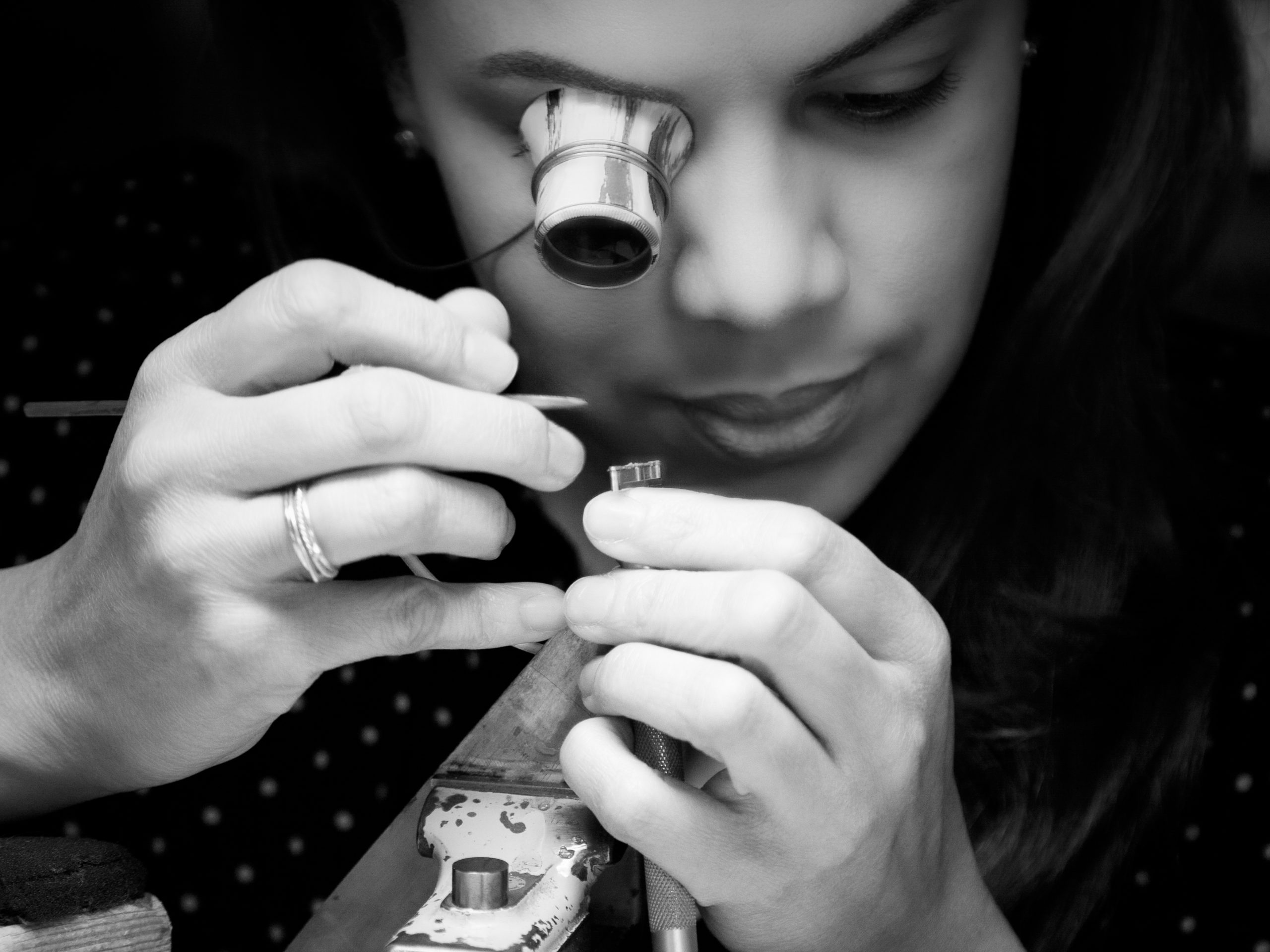
Nathalie Jean-Louis likes to do things with utmost precision. Her work — hand beveling and decorating high-end watch movements — but also everything else. She has built her career with a calm yet powerful determination and explains her choices with words as carefully picked as the grit of sandpaper she was applying on a double barrel bridge as I knocked on her door.
Tucked under one of the charming arches of Bienne’s old town, her atelier is all about detail. Stepping from the cobbled pavement to enter, I walked into a quiet scene of carefully selected antiques, artful blow-ups of the owner’s work, and meticulously arranged tools for beveling, perlage and other masterful movement-finishing techniques.
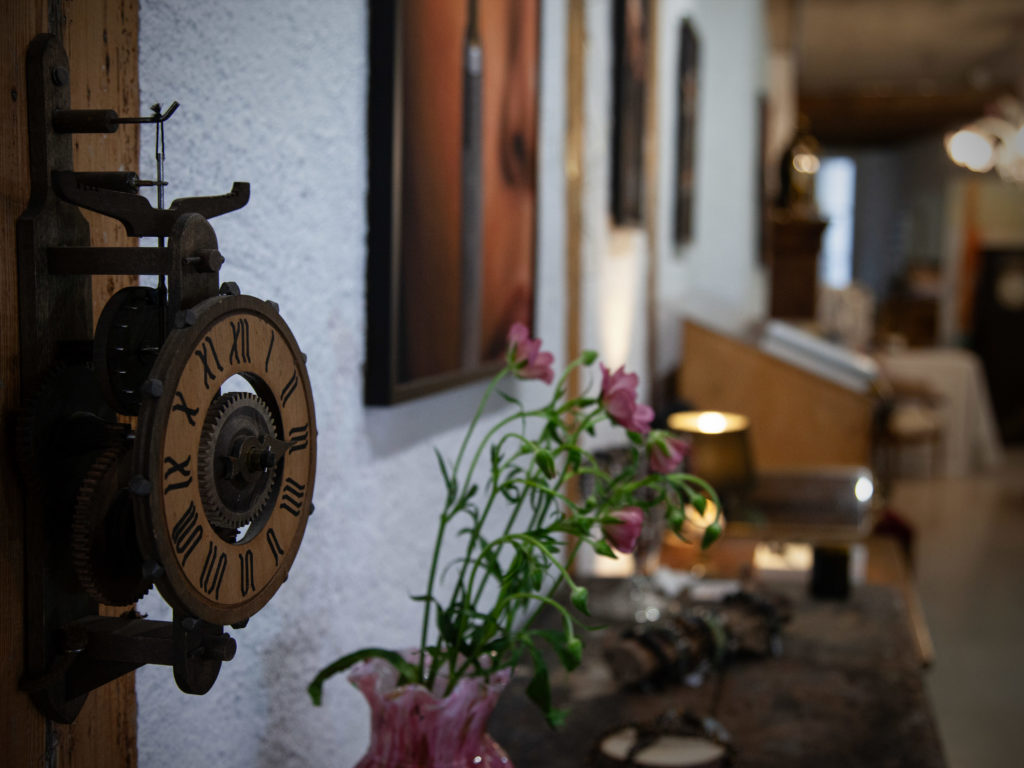
As someone whose passion for watches came with so-called toolwatches, I often used to wonder: what is the big deal about movement finishing? What is the point? So, I dared to ask Ms. Jean-Louis. “What motivates me is pushing the limits,” she answered. “The quest for perfection. Starting with raw material to end up with a perfectly finished piece is extremely satisfying.”
What exactly does an independent movement finisher do? How does the trade operate? Some artisan watchmakers bevel and decorate the movements themselves; others prefer to entrust experts who specialize in it. Those are Ms. Jean-Louis’s clients.
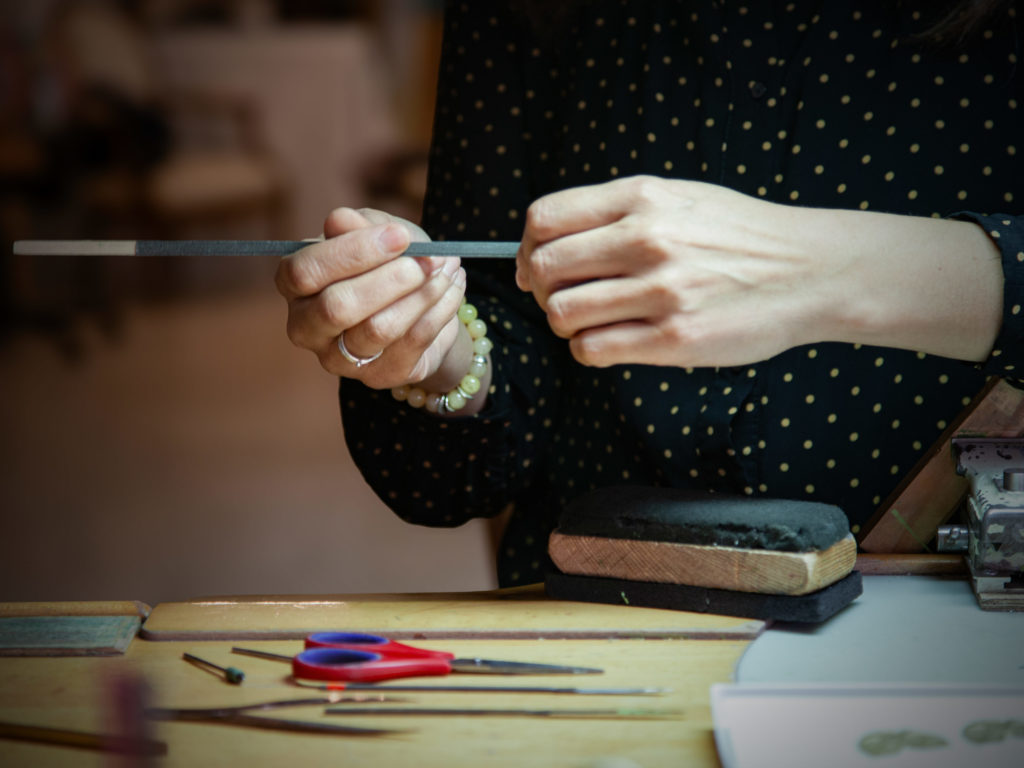
The watchmakers we are talking about are all independents. For those of you less familiar with the parallel universe of obsessive watch enthusiasm, independents refers not just to companies that are not owned by a group, but more specifically to high horology artisan watchmakers who produce just about everything by hand or have it custom-made in tiny quantities. In such timepieces, much of the focus is on the movement ticking inside: its uniqueness, its architecture, and, where Nathalie Jean-Louis comes in, its finishing.
There are two main types of movement finishing. One is beveling, anglage in French, which is about giving perfectly even mirrored surfaces to components of the movement, typically bridges and plates. The other is decoration, a variety of techniques used to embellish the appearance of parts, such as perlage, a technique consisting in striking a pattern of small, overlapping circles, or guilloché, a delicate intersection of lines creating texture. Nathalie Jean-Louis is an expert at both, often combining various techniques on a single, minuscule piece.
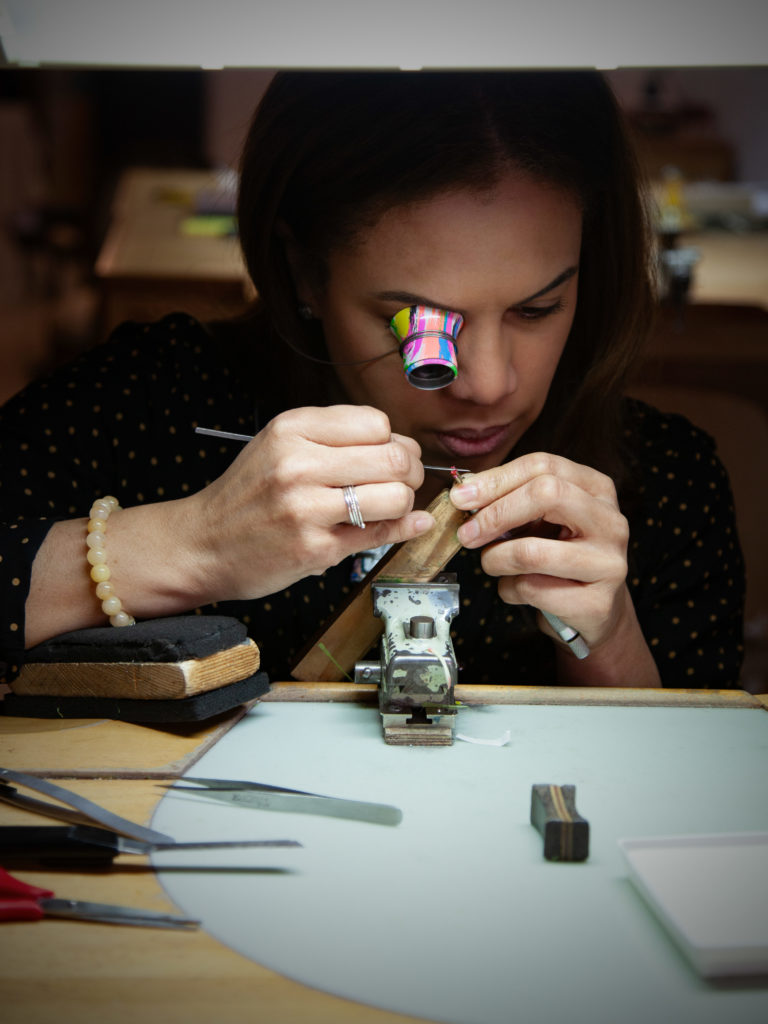
Confidentiality is inherent to much of what happens behind the scenes in watchmaking, but we were fortunate that the customer for whom Nathalie Jean-Louis was working the day we visited agreed to have her perform the work in front of us. Simon Brette is about as up-and-coming as it gets in the world of high horology. His first release, Chronomètre Artisan, has already won the hearts of independent watchmaking aficionados around the world. Like many, they were not in the least surprised to see Brette awarded the Grand Prix de l’Horlogerie de Genève for Horological Revelation in 2023.
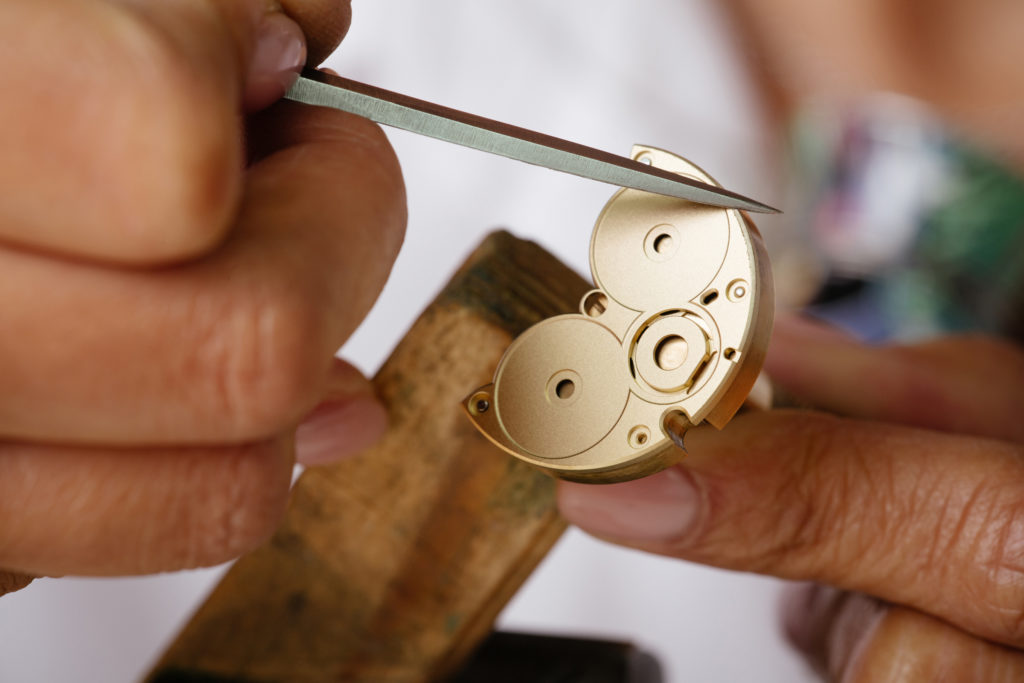
One of the signature components of Brette’s watches is the titanium double bridge, hosting the two parallel barrels of the manual wind movement. It was a privilege to see Nathalie Jean-Louis at work on her mission to give the piece its perfect shape and shine. With her file, the decorator’s tool par excellence, she chamfered the edges until they had the desired 45 degree angle. Then, using a wide range of sandpapers with increasingly finer grits, she smoothed, polished, and perfected the surface until it reached its immaculately mirrored appearance. During the glimpse I witnessed of a process that will end up taking several hours, I was hypnotized by the calm, precise, and incredibly focused motion. I remembered reading about the virtuosity of Nathalie Jean-Louis’s hands. It actually felt like the magic went beyond. Her entire upper body, her mind, dare I even say her soul, all seemed to unite for the single purpose of creating microns of perfection.
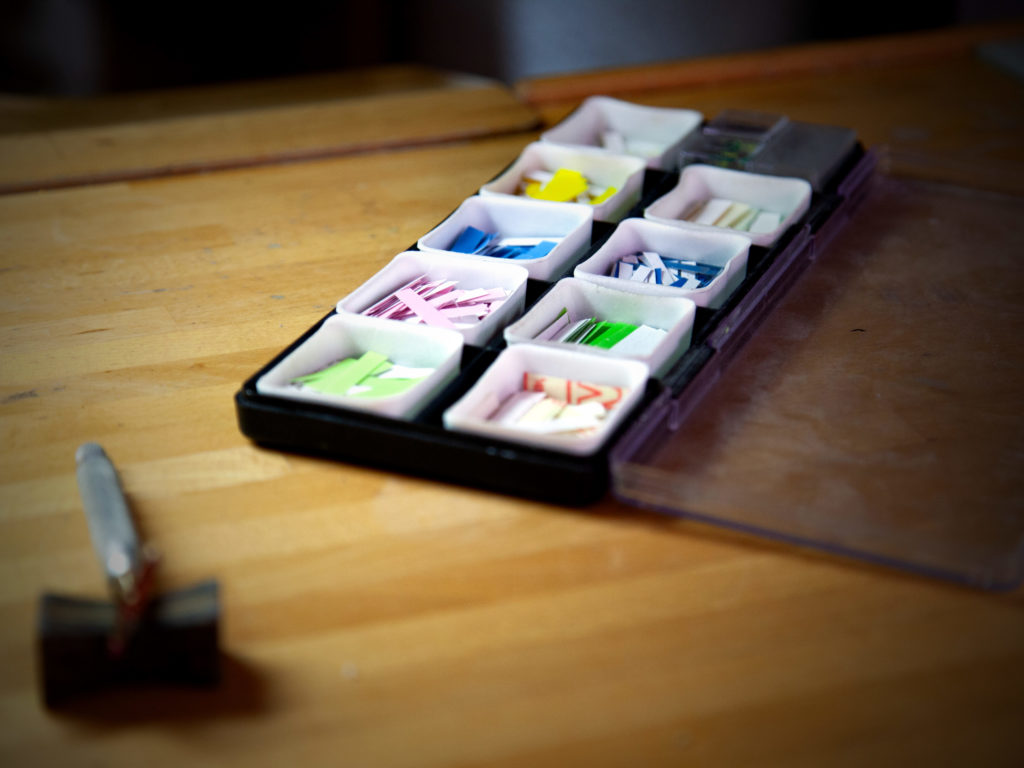
Other elements of the Chronomètre Artisan movement beveled by Ms. Jean-Louis include the seconds bridge, the balance bridge, and the hour wheel bridge. As described on Simon Brette’s website, she also takes “care of the polishing of the rounded arms, the chamfering by hand, the brushed lines, the polished moldings, the sandblasting and the circular graining.” The fact that such a high-profile watchmaker proudly puts forward the work done by Nathalie Jean-Louis is a testimony to the level at which she operates and her reputation within watchmaking circles.
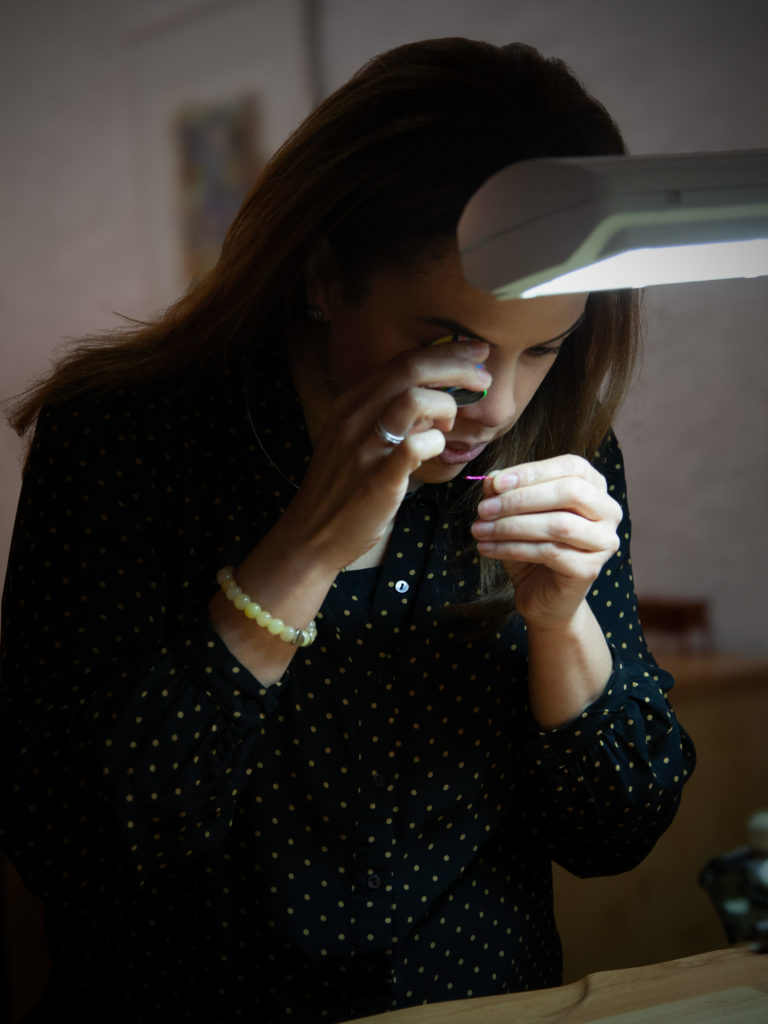
What is remarkable with such techniques — and explains the emotion they generate in watch enthusiasts — is how the result is both flawless and inherently human. No machine could achieve them with such delicacy and yet, upon inspection, there is nothing uneven, nothing that does not look exactly as intended. I find that very counter-intuitive. If something is smooth, symmetrical, and consistent throughout, then surely a machine could do it better than a person? Well, not here. No existing machine can execute so precisely. The result is a piece where no imperfection is visible, to my eye at least, and yet that bears a finesse only a graceful, expert, human touch could give.
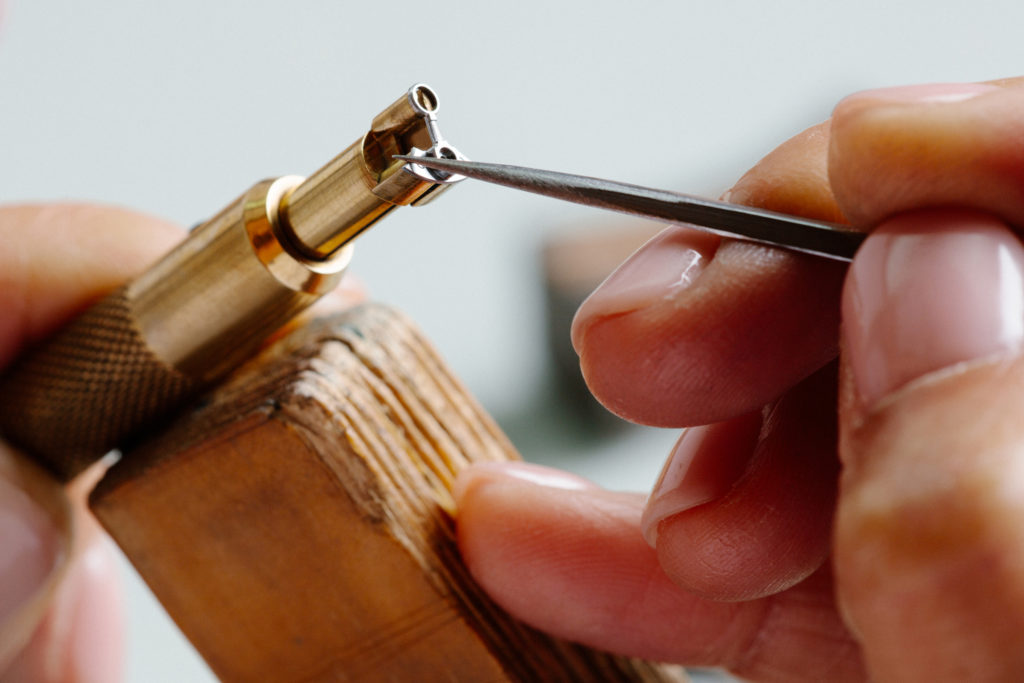
“In movement decoration, all the senses are being used,” Ms. Jean-Louis explained. “The sound of the file or the sandpaper on the metal guides my motion.” Maybe the need for silence is one of the reasons she insists on always working on her own. “A solitary approach to work corresponds to my personality. I can happily focus for hours on a single detail.” It also explains why the angleuse works seven days a week, by choice. “I have no bad days for as long as I am in my studio,” she adds. “It is my life and my pleasure.”
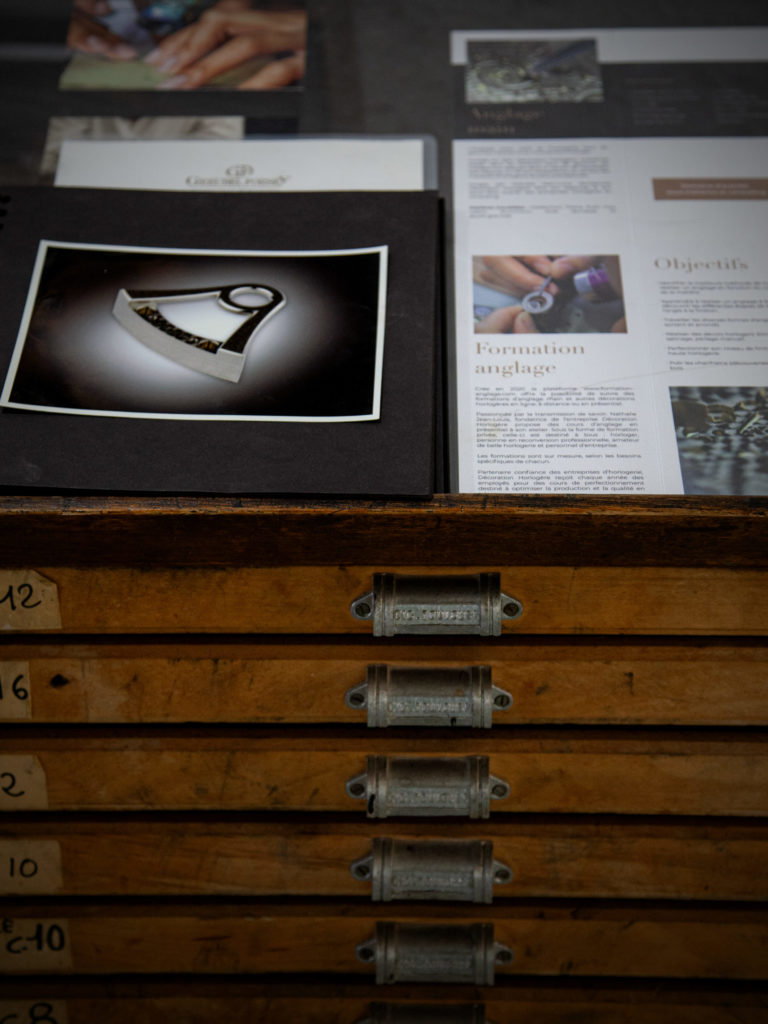
It was after studying fine arts that Nathalie Jean-Louis began her movement decoration career 20 years ago at Piaget. There, she learned the ropes, starting with perlage. After three years in La Côte aux Fées, she joined Greubel-Forsey, one of the most prestigious independent watchmakers, a maison known for pushing the limits of what is physically and aesthetically possible, often referred to as makers of museum pieces. “That is where I learned to never compromise. Never let anything go. It must all be perfect, no matter what it takes.” After four years fine-tuning her techniques on some of the world’s most exceptional movements, Ms. Jean-Louis created her own independent atelier.
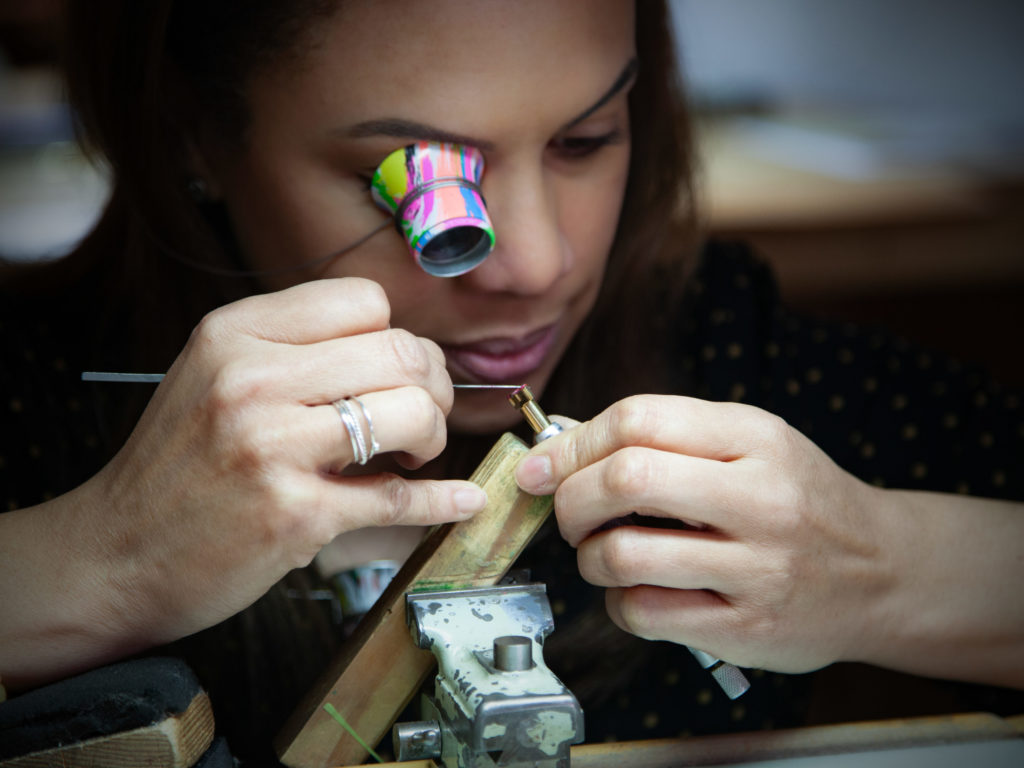
“It wasn’t always easy,” she confessed. “Now, I am fortunate that I don’t have to look for clients. At the beginning, it was a different story.” When I asked Nathalie Jean-Louis if being a woman in a typically male-dominated trade had been difficult, I did not get a clear response. I interpreted that as a “yes,” but something she had successfully overcome and did not want to insist on.
The level of focus and determination in Ms. Jean-Louis’s personality is as sharp as the files she applies to the horological components in her atelier. I was not really surprised, then, by her response when I asked what her favorite material to work on is: “the most challenging one.” She was referring to titanium. Due to its high strength and low thermal conductivity, titanium has many benefits, but those same characteristics make it notoriously difficult to finely shape and polish.
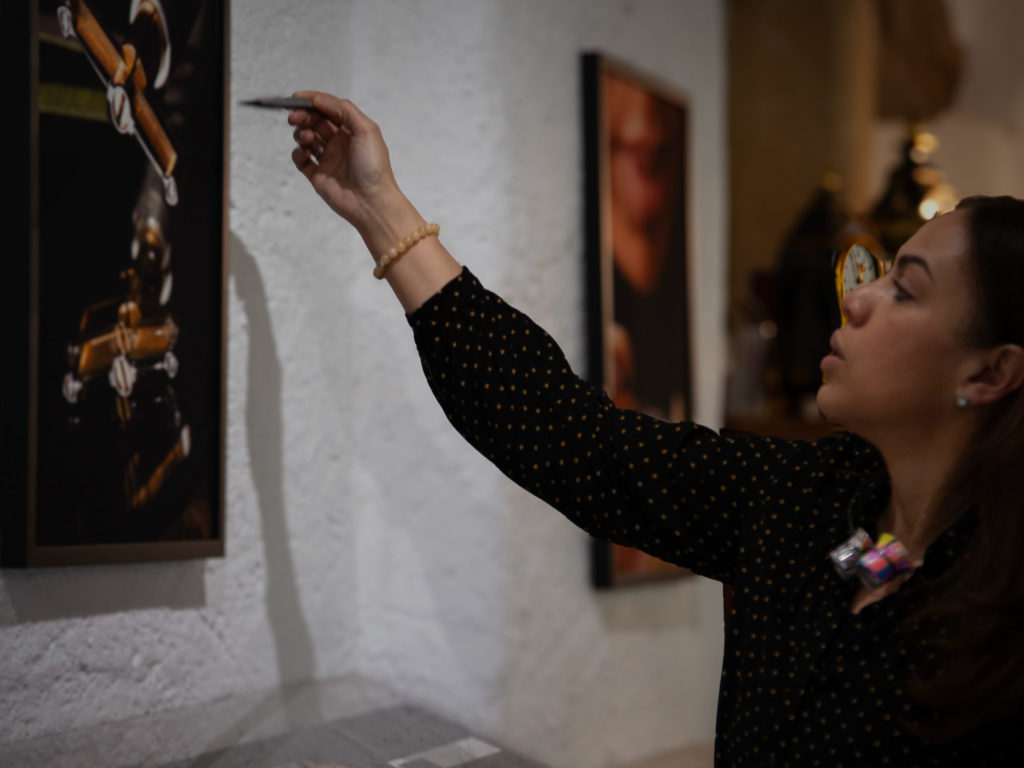
The seconds bridge on Simon Brette’s masterpiece, made in grade 5 titanium, is among Nathalie Jean-Louis’s favorite pieces to have worked on. She even has a picture of it, under the macro lens of Bienne photographer Stefan Beyeler Dutor (more on him below), hung on the wall opposite her workbench. “With the right level of skills and effort, it can be made to look like gold,” she said, with a smile.
While Nathalie Jean-Louis is solitary in her work, she believes in the virtues of sharing her savoir-faire. When the Geneva-based Centre de Formation de l’Horlogerie opened a chapter in Neuchâtel for a year, they contacted her to teach. It was the inception of a passion for passing on the craft and the values it demands. Since then, Ms. Jean-Louis has been offering her own classes in her studio. “My students range from those already working in the watch industry, wanting to perfect their skills, to people considering a life change,” she explained.
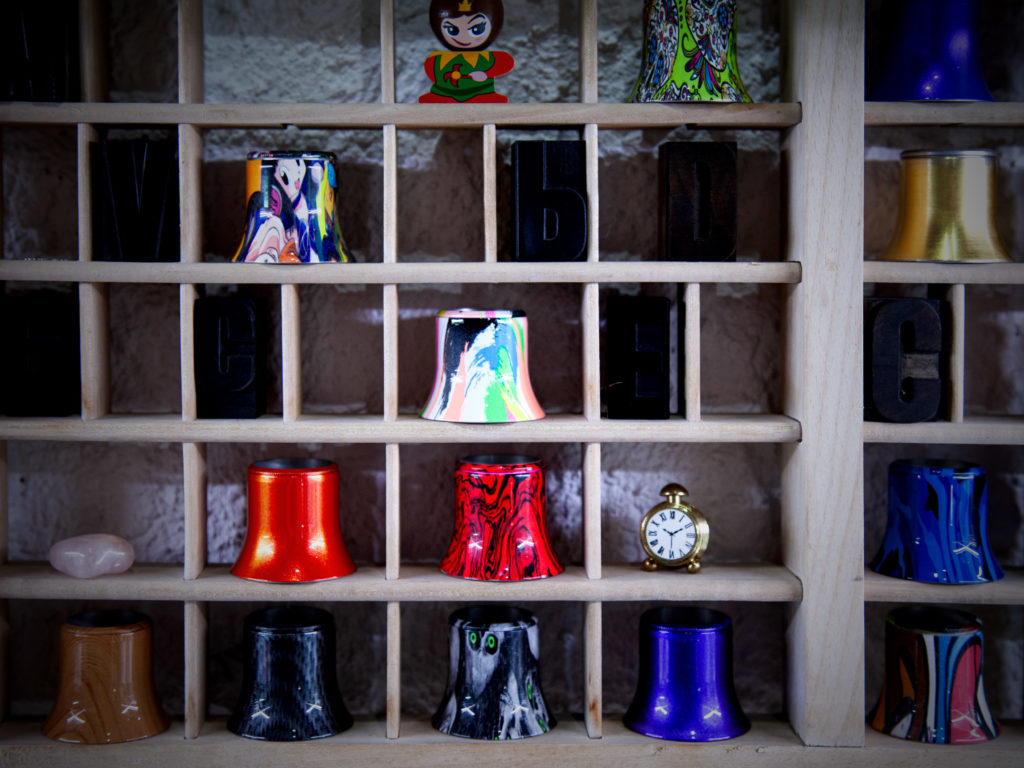
I mentioned earlier Nathalie Jean-Louis’s background in the Arts. Well, believe it or not, she is also a painter. Her work has been exhibited in several Swiss galleries but also in Florence, Italy. Combining her passions, she even launched Watchmaking Tool Art, a range of artfully designed watchmaking tools. The unique offering, created to add some joy and creativity to watchmaker companions that have looked the same for decades, even had her featured in the New York Times. On a personal note, the blue camouflage loupe I proudly own from the collection makes my other loupes look very pale and is always within reach on my desk.
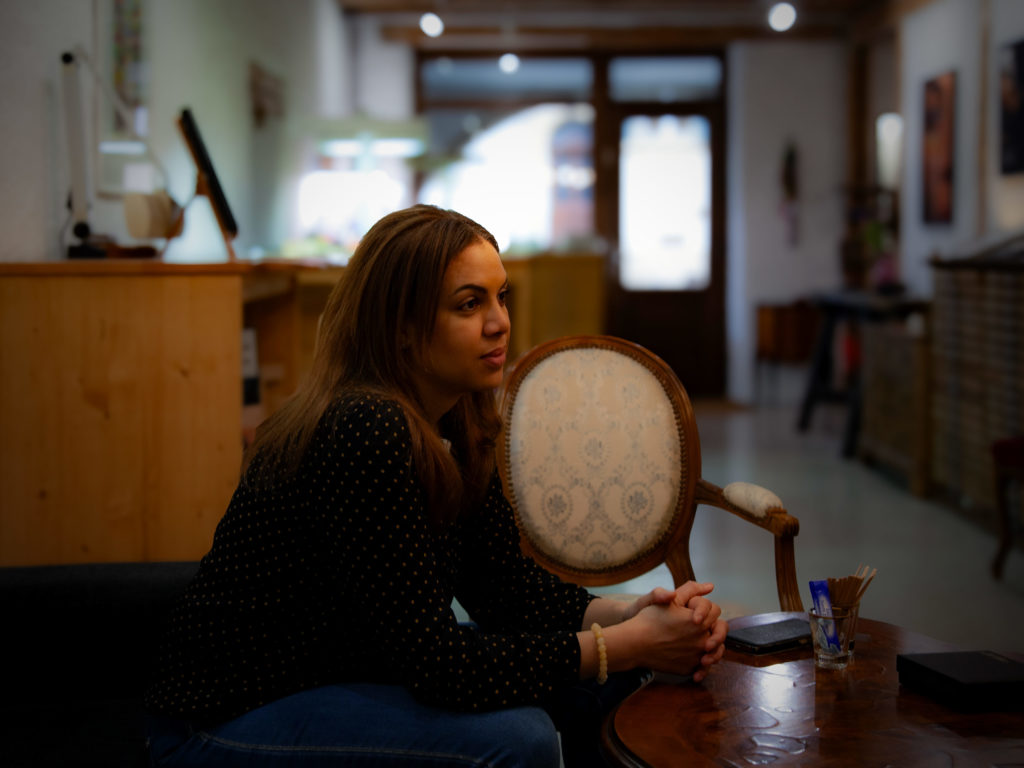
There are many angles, pun intended, to Nathalie Jean-Louis. And I did not even get to mention her jewelry line or how she partially repurposed her studio as an art gallery. While all facets are impressive in their own right, what is most remarkable is how they are all connected and come together. Ultimately, her aesthetic vision, her artful touch, her focus, strength, and determination all bring a level of uniqueness to her skills, passion, and mission of bringing the final touches of perfection to the art of watchmaking. I am extremely curious to see what Nathalie Jean-Louis’s future will consist of, all the more after I asked my final question: “Why are you not wearing a watch?” Without hesitation she replied, “I will if one day I make my own.”
Photography by Jeanne Grouet for Time Files, with the exception of the two movement finishing macros, taken by and reproduced with the permission of Swiss photographer Stefan Beyeler Dutor.


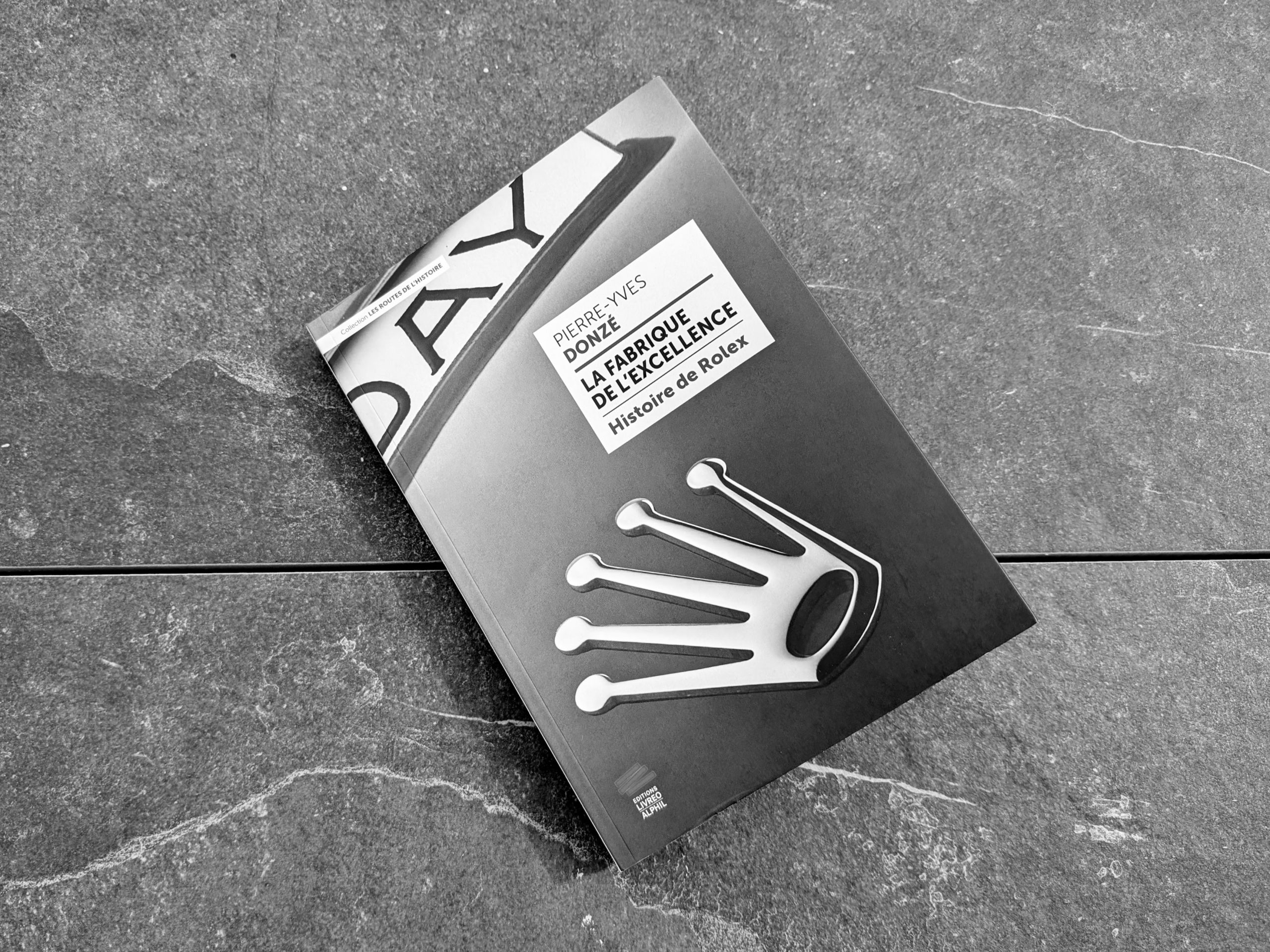
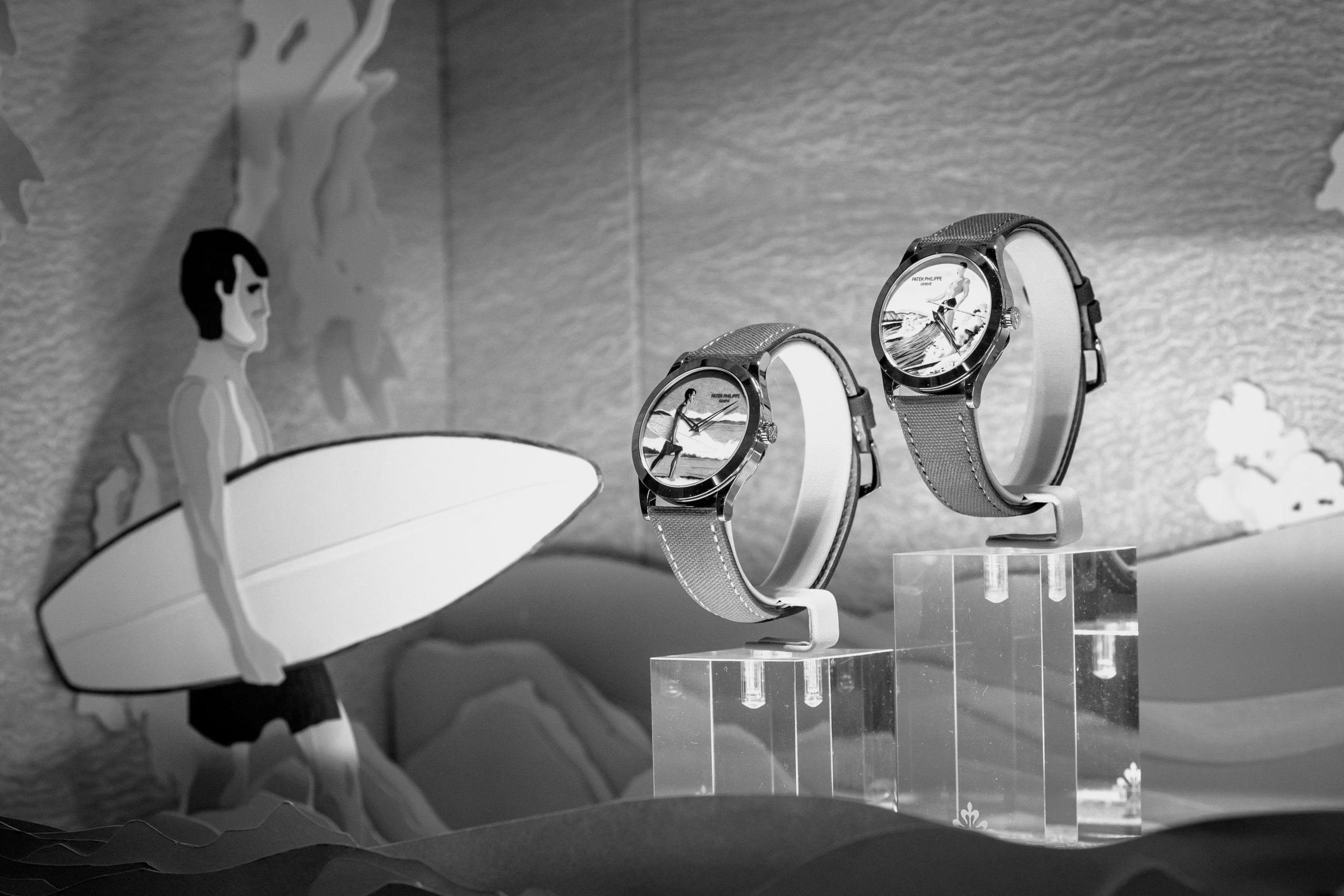
Fascinating insight into the lesser known artisans without which the watches we so admire/desire wouldn’t be the same.
Très beau(x) portrait(s) d’une personnalité hors du commun
People and stories like this are what make watchmaking so wonderful.